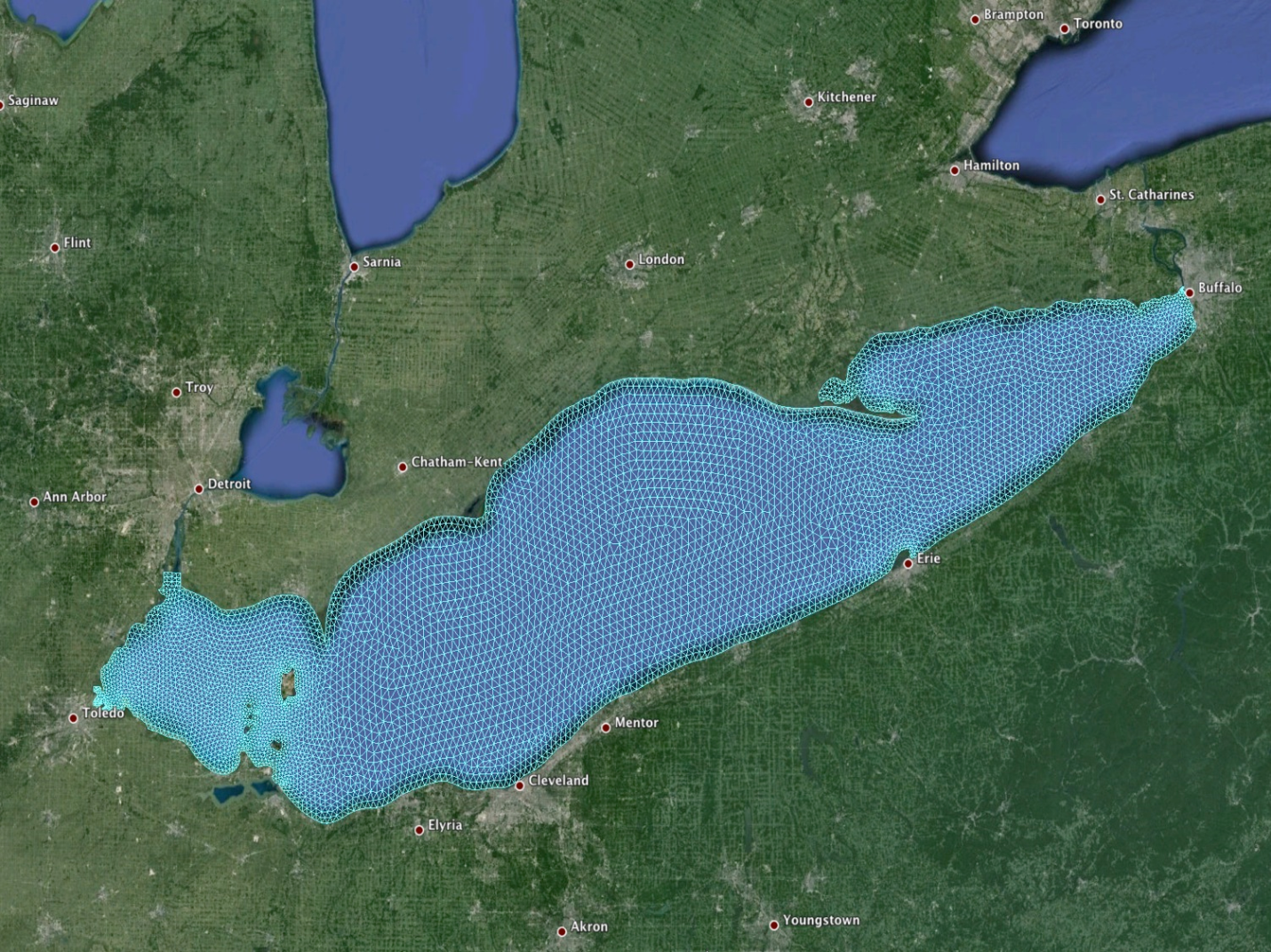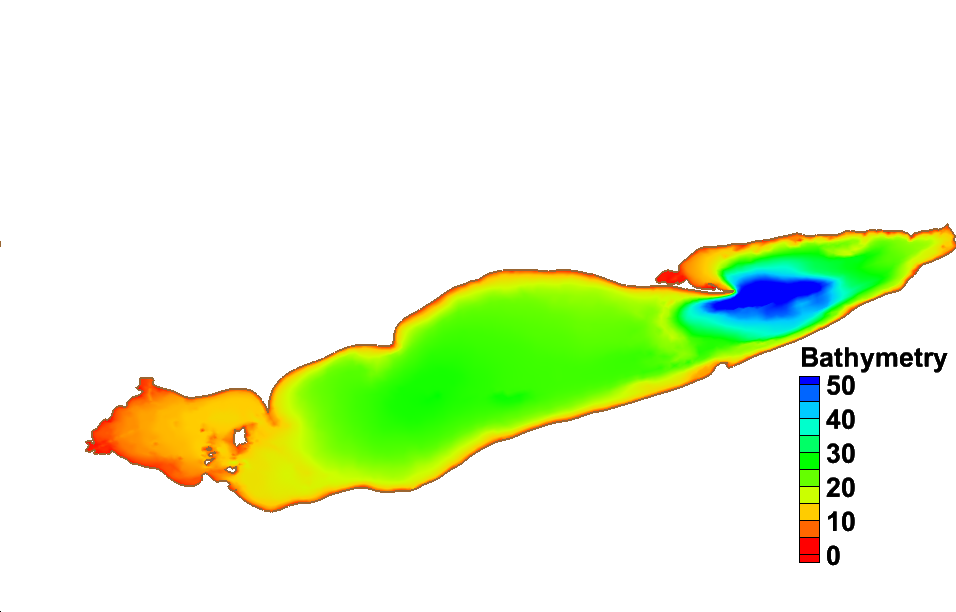The Lake Erie Operational Forecast System (LEOFS)
Oceanographic nowcast and forecast guidance are scientific predictions about the present and future states of a water body (generally including water levels, currents, water temperature and salinity). These predictions rely on either observed data or forecasts from large-scale numerical models. A nowcast incorporates recent (and often near real-time) observed meteorological, oceanographic, and/or river flow rate data and/or analyzed (e.g. gridded) meteorological and oceanographic products. A nowcast covers the period of time from the recent past (e.g., the past few days) to the present, and it can make predictions for locations where observational data are not available. Forecast guidance incorporates meteorological, oceanographic, and/or river flow rate forecasts and makes predictions about the future states of a water body. A forecast is usually initiated by the state of a nowcast.
NOAA's National Ocean Service (NOS) collaborated with the Great Lakes Environmental Research Laboratory (GLERL) in developing and transitioning the new generation of Lake Erie Operational Forecast System (LEOFS) to operations, to provide higher-resolution forecast guidance of water level, currents and water temperature. The upgraded LEOFS uses the Finite Volume Community Ocean Model (FVCOM) as its core circulation model. It is coupled to unstructured grid version of Los Alamos Sea Ice Model (UG-CICE) to provide additional forecast guidance of ice concentration, ice thickness and ice velocity. The forecast horizon is extended to 120 hours.
The new LEOFS model grid has 6,106 nodes and 11,509 elements. The cell size ranges from 400 m to 4 km, with higher resolution along the shoreline and in the shallow western basin and coarser resolution for the open waters in the mid and eastern basins. The grid has a minimum depth of 0.5 m and maximum depth of 62.7 m. Detroit River (inflow) and Niagara River (outflow) are treated as open boundaries.
For the nowcast, water levels along the open boundary are prescribed by the real-time water level observations at the NOAA water level gauge at Gibraltar, MI (Station ID 9044020) for Detroit River and at Baffalo, NY (Station ID 9063020) for Niagara River with an offset adjustment of 0.6 m. Water temperature along the open boundary are derived from real time observations at USGS station at Fort Wayne (Station ID 04165710). Surface forcing conditions are from NCEP's 3-km, hourly updated High-Resolution Rapid Refresh (HRRR) atmospheric model.
For the forecasts, along the boundary, water levels are specified using the previous day averaged water level and persisted for the forecast period. Forecasts from the National Digital Forecast Database (NDFD) on the 2.5-km CONUS grid are interpolated onto the LEOFS model grid as surface forcing.
LEOFS runs four times per day with 6-hour nowcast and 120-hour forecast for each cycle on the NCEP's Weather Climate Operational Supercomputer (WCOSS).
LEOFS output files are in NetCDF format. An archive of LEOFS NetCDF nowcast and forecast files can be accessed from CO-OPS THREDDS server.
All CO-OPS official real-time products, including nowcast and forecast guidance from LEOFS are monitored by the CO-OPS's Continuous Operational Real-Time Monitoring System (CORMS). CORMS provides 24 hour per day, 7 day per week monitoring and quality control of sensors and data in order to ensure the availability, accuracy, and quality of water level, current, and other marine environmental information. CORMS is intended to identify invalid and erroneous data and information before application of the data by real-time and near real-time users.

